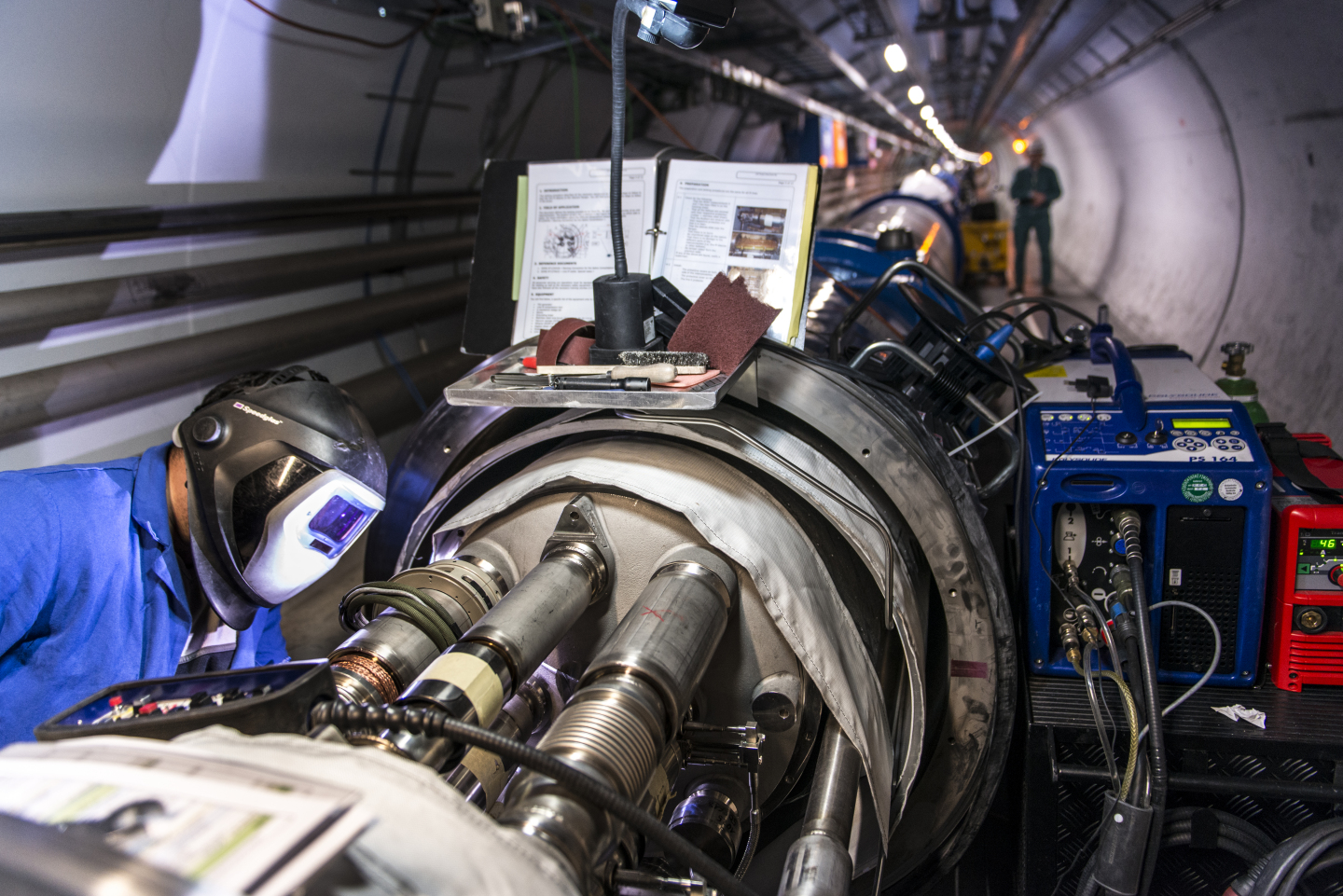Target energy achieved ! On Tuesday 9 December at 2.18 p.m., a key milestone in the restart of the world’s largest and most powerful particle accelerator was passed. Sector 6-7 of the Large Hadron Collider has been commissioned to a beam energy of 6.5 TeV. The 154 superconducting dipole magnets which make up this sector – corresponding to one eighth of the accelerator – were powered to a current of around 11,000 amps! These currents (about a thousand times greater than in your average household appliance) are needed to generate sufficiently high magnetic fields to bend the trajectory of particles with an energy of 6.5 TeV. It’s at this unprecedented beam energy that the LHC will restart next spring with the aim of producing collisions with a total energy of 13 TeV.
From 2010 to 2013, the LHC ran at beam energies of up to 4 TeV. This first run produced a rich harvest of results in hitherto uncharted areas of physics and, in particular, led to the discovery of the famous Higgs boson. But the LHC was designed to operate at even higher energies and, to achieve this, the machine was shut down for almost two years for the main magnet circuits to be consolidated. This involved reinforcing 1,700 magnet interconnections, including more than 10,000 superconducting splices. So the commissioning of the modified sectors of the accelerator with the higher-intensity currents needed to reach 6.5 TeV beams is a key milestone in the restart process.
Like top athletes, the LHC magnets have to undergo a strenuous training programme to reach the required energy. The magnets are superconducting, which means that when they are cooled down current passes through them with zero electrical resistance. During training, the current is gradually increased and as it circulates inside the magnet coils the forces generated can cause tiny movements, which can in turn cause the magnets to “quench”, i.e. suddenly return to a non-superconducting state. When this occurs, the circuit is switched off and its energy is absorbed by huge resistors.
The magnets in all the other sectors will undergo similar training before being ready for 6.5 TeV operation. Many other tests will follow before beams can circulate in the LHC once more, next spring.

